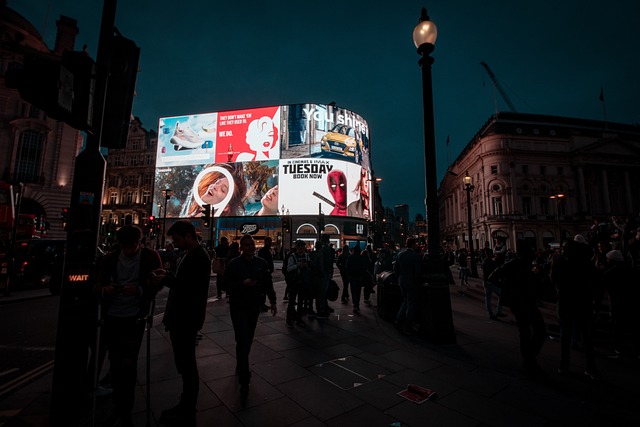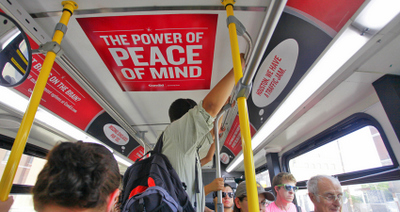
You can build strong relationships with your audience using the best influencer marketing tools. These tools also give you valuable insight into which influencers will be most effective in reaching your target audience. These services can be used by any size business, regardless of whether they are large corporations or small businesses.
Onalytica is a platform that helps you find influencers and analyze their impact on your brand. Onalytica allows you to search the database by type of influence, demographics and social networks. Its unique network mapping feature shows connections between brands. Filter the database by category or filters. You can also choose to filter the database by categories and filters.
Webfluential is another tool for influencer marketing that lets you manage your outreach and measure ROI. The powerful content engine allows for connections with advertisers and bloggers. This marketplace for influencers has over 244,000,000 followers in the U.S., and it offers retargeting capabilities.

Find Your Influence is a network made up of more than 100,000 influencers. It has members like Kleenex, H&R Block, and many others. This platform lets you create campaigns, pick influencers and secure payment processing. You can also monitor the performance of content.
BuzzSumo, an online marketing tool, produces high-quality content. It helps you create viral campaigns thanks to its advanced algorithms. These campaigns create an extremely effective branding technique. You can choose to pay either monthly or annually, depending on your budget. The yearly plan offers a 20% discount.
Neoreach is an online platform that targets companies looking for a similar marketing strategy to the Fortune 1000. Its database includes over 40 filters for finding the perfect influencers for your campaign. The roll-up view shows you all deliverables, deadlines, contracts, and more.
Find Your Influence provides plans for all sizes of businesses. These plans include an initial search, campaign proposals and secure payment processing. They also have a dedicated team that can help you achieve your marketing goals.

Upfluence provides many options to help you expand your business. The all-in-one service includes reporting, performance metrics and custom pricing. They also offer a paid option if you need a more powerful tool.
Buzzstream is a social media monitoring and tracking system that allows you to identify and contact the most influential people in your niche. It allows you to send personalized outreach email to prospects. It also allows you to track your follower and unfollower stats. It also displays detailed analytics. It uses smarter algorithms to organize your influencer group into communities based on their interests and relationship.
Another influencer marketing tool that will allow you to connect with your target audience is Dovetale. Dovetale is a platform that allows you to interact with influencers that fit your brand's needs. It has powerful management tools that allow you to access records and also allows you to meet up with other users.
FAQ
What is affiliate marketing?
Affiliate marketing can be described as an online business model. You earn commissions by referring customers who purchase products and/or services on other websites. The product owner pays you for each person who buys from you.
Referrals are the foundation of affiliate marketing. People don't need to do anything to purchase from you. You just need to refer them to our website.
You can make money without doing any hard selling at all. It's easy to sell just as much as it is to purchase.
An affiliate account can be created in minutes.
The more you refer people, the more you'll receive commission.
There are two types affiliates.
-
Affiliates who own their own websites
-
Affiliates who work in companies that offer products or services.
What are your thoughts on television advertising?
Television advertising is a very effective medium to reach many people at once. It was also quite expensive. However, if you use it well, it can be incredibly powerful.
While there are many types and styles of TV ads, most share some common traits. Planning any TV ad should start with ensuring it fits in its category. Don't confuse a lifestyle ad with a product advertisement if you are running a commercial. Your message should stay consistent throughout the campaign.
A second important thing to keep in mind is that prime-time hours is the best time to air ads. This is because TV viewers often relax while in front of the screen. You want them relaxed enough that they can focus on you words.
The bottom line is that even if you have a lot to spend, it doesn't necessarily mean you'll be able to get great results. It may be the reverse. The University of California conducted a study that found commercials shown on popular programs were less likely than those on non-popular programs to sell products. So, if you spend a lot of money on TV advertising, ensure you do it right.
What is an advertisement campaign?
Advertising campaign refers to a series of advertisements intended to promote a product. This could also include the entire production of these ads.
The Latin word "to sell" gave rise to the term "ad". Marcus Terentius Varro (116–27 BC), was the first to make it a verb, meaning "to make sale".
Advertising campaigns are most often done by large agencies or businesses. Advertising campaigns can involve many media types, such as television, radio, print, and the internet.
Advertising campaigns are typically long-lasting and have clear goals. One example is that some campaigns seek to create awareness while others are more focused on increasing sales.
What do you need to know about radio advertising?
You should understand how the different types of media affect each other. It is important to understand that all media forms are complementary and not competitive.
Radio is best utilized as an extension to TV advertising. It enhances television by reinforcing important messages and providing additional details.
Radio listeners often find TV commercials too lengthy. Radio ads tend to be shorter and more affordable.
What do you need information about print advertising
Print advertising can be a powerful medium for communicating with customers. Many companies use it to promote products and services. The goal is to get the consumer's attention.
Print ads are usually short (one page) and contain text, pictures, logos, and other graphics. Print ads can also contain sound, animation, videos, and hyperlinks.
These are the main types of print ads:
1. Brochures - These are large format printed pieces designed to attract people into stores. They often have colorful pictures and eye-catching designs.
2. Catalogues: These are smaller versions or brochures. These are typically sent to customers who ask for specific information.
3. Flyers - These are small pieces of paper distributed at events such as concerts and fairs. They are generally free but must be paid for if they are handed out at retail outlets.
4. Flyers are also available in posters. They are displayed on walls, fences, and buildings. They are usually made using computer software programs, which is designed to draw the eye of passersby.
5. Direct mail – These are direct mail letters and postcards sent to potential customers. Companies send these out periodically to remind existing customers about their business.
6. Newspaper Ads - These are placed in newspapers and magazines. They are usually quite long and contain both text and images.
How can I select my target audience?
Start with yourself, and the people closest to you. Ask yourself "Who am I trying reach?" if you aren't sure where to start.
Ask yourself these questions: Who are the most influential people in my industry? What problems do they have to deal with every day? Which people are the most intelligent in my industry? Where can they be found online?
Take a look back at how you started your company. What was your motivation for starting? What was your problem and how did it solve?
These answers will help identify your ideal clients. You'll also learn more about what makes them tick and why they buy from you.
You can also look at your competitors' websites and social media pages to find clues about whom they cater to.
Once you have identified your target customer, you need to decide the best channel to reach them. An example: If you provide services to realty agents, you may create an informational website for home buyers.
You could create a blog if you offer software to small business owners.
You could also create a Facebook account for teens if you sell clothing. For parents who are looking for child-friendly restaurants, you might set up your own Twitter account.
The important thing is that you have many options for getting your message across.
Why not use social media advertising for your business?
Social Media Marketing allows you to reach customers right where they are, via social networks like Facebook, Twitter, LinkedIn and YouTube. These networks can be targeted with keywords.
This advertising method is much more affordable than traditional marketing methods because it costs less to market online. You can also build strong relationships and trust with your clients, both current and prospective.
It's easy to start using social media to promote your business. You only need a smartphone or computer and internet access.
Statistics
- Advertising's projected distribution for 2017 was 40.4% on TV, 33.3% on digital, 9% on newspapers, 6.9% on magazines, 5.8% outdoor, and 4.3% on radio. (en.wikipedia.org)
- In 1919 it was 2.5 percent of gross domestic product (GDP) in the US, and it averaged 2.2 percent of GDP between then and at least 2007, though it may have declined dramatically since the Great Recession. (en.wikipedia.org)
- Google will display whichever ad type (CPM or CPC) is expected to earn more revenue for the publisher, which is in Google's best interest since they take a 32% share of the revenue. (quicksprout.com)
- It's 100% reliant on your website traffic. (quicksprout.com)
External Links
How To
How do I advertise with Google?
AdWords is Google’s advertising platform that allows businesses to buy ads using specific keywords. The first step is setting up your account. You select a campaign name, set the budget, choose the ad type (text, image, video), and add keywords. You then place your bids on these keywords. If someone clicks on one of your ads, you pay only if the click comes from a person who searched for one of your targeted keywords. This allows you to get paid even if people don’t buy anything.
Google has many tools available to make sure your ads are effective. These include Ads Preferences Manager, Keyword Planner, Analytics, and Ads Preferences Manager. These tools allow you see which options work best for your business.
A keyword planner can help you identify the right keywords for your campaigns. You can also see how competitive certain keywords are, which will help you decide whether to spend money bidding for them.
Ads Preferences Manager can be used to adjust settings such as the maximum impressions per hour and the minimum price per click.
Analytics lets you track the performance of your ads and compare them to competitors. Reports can be viewed that compare your ads to others.